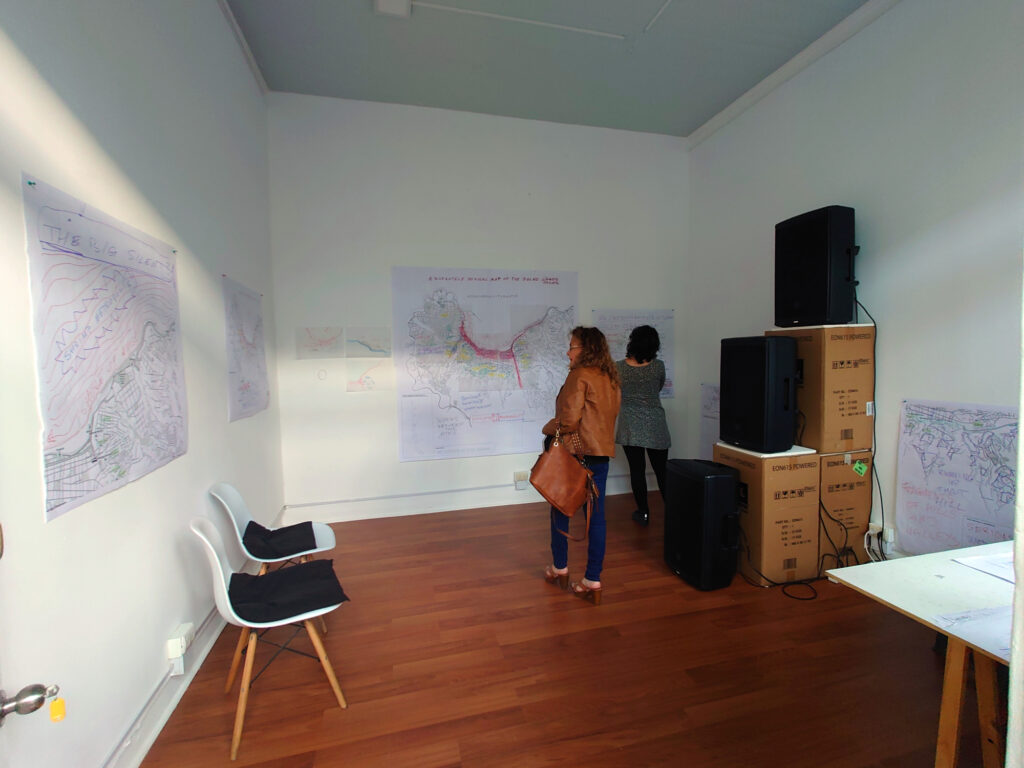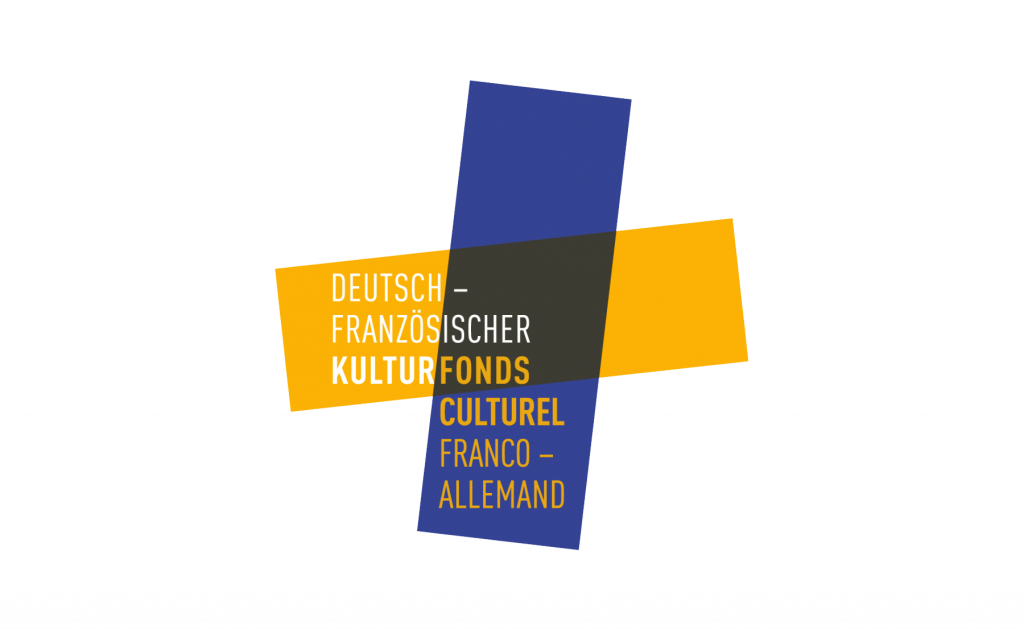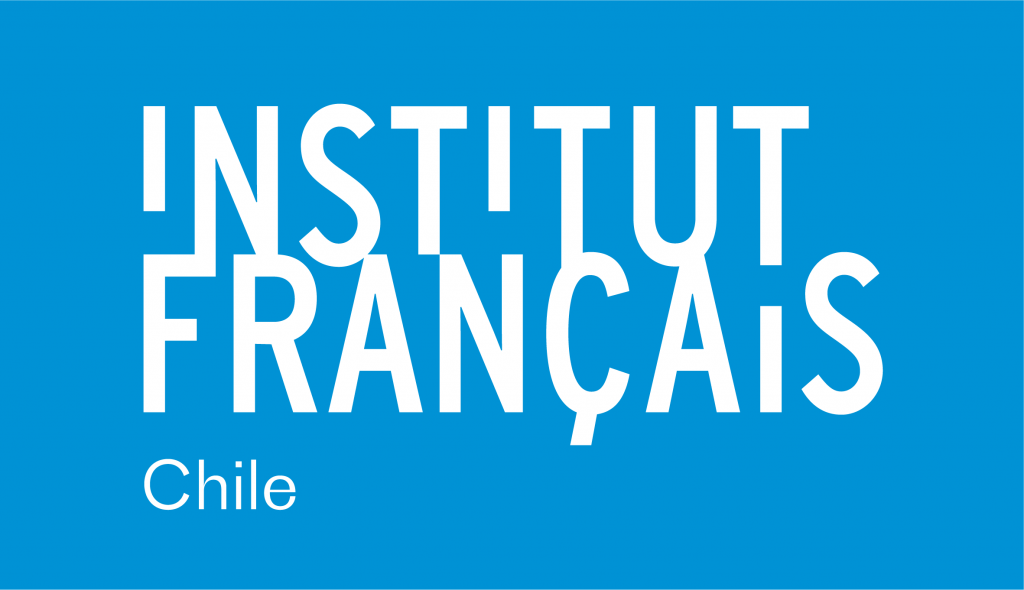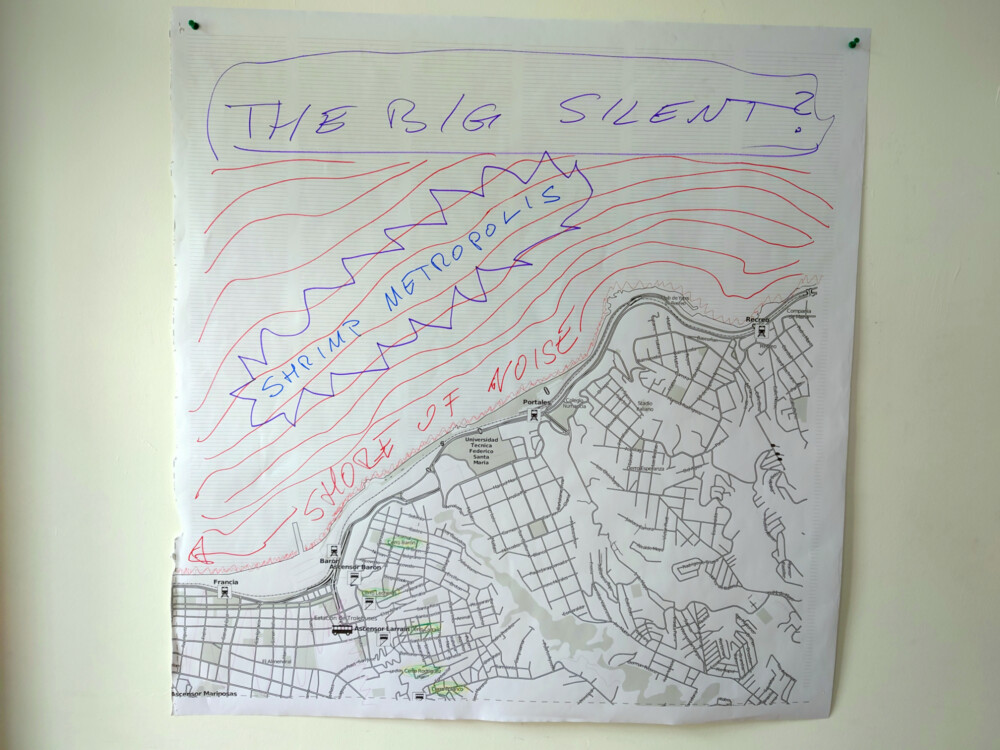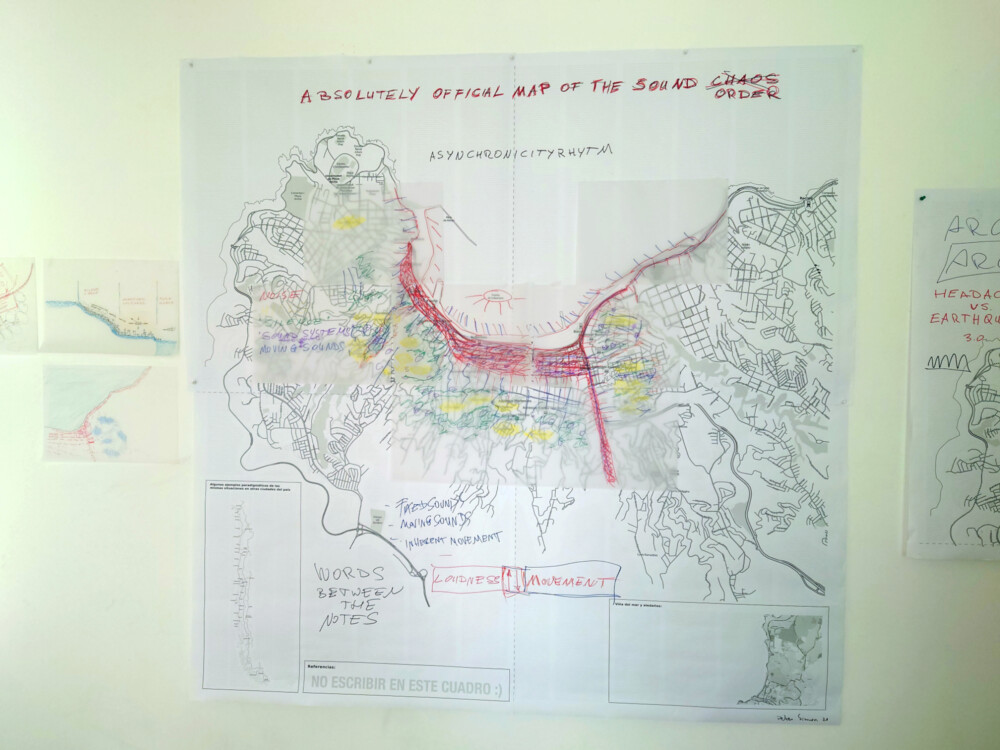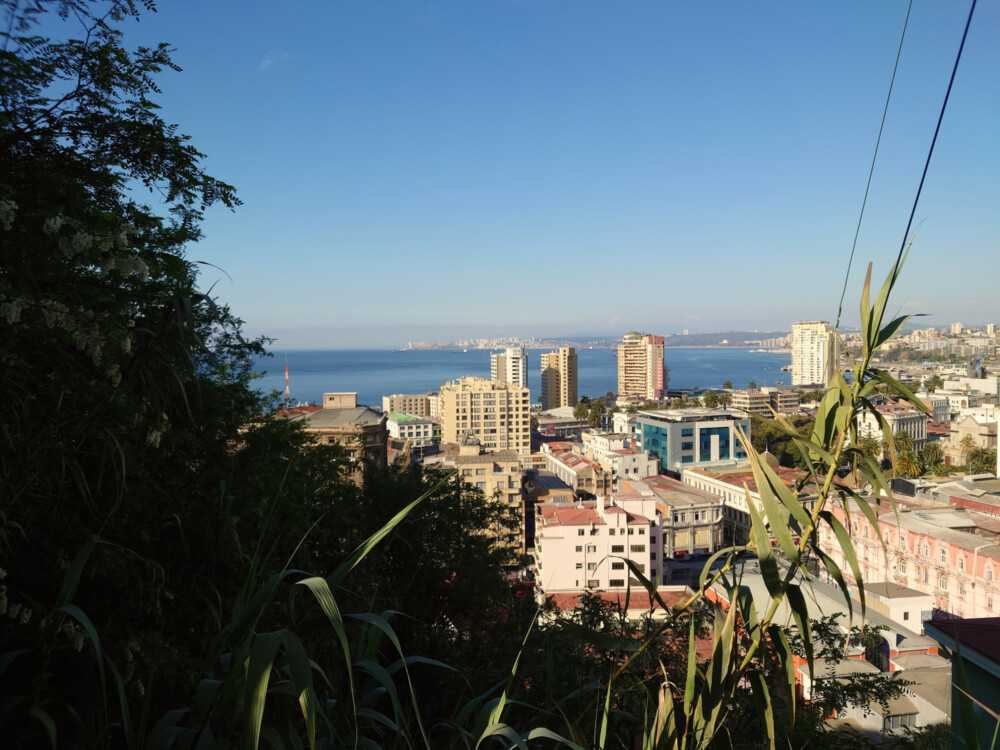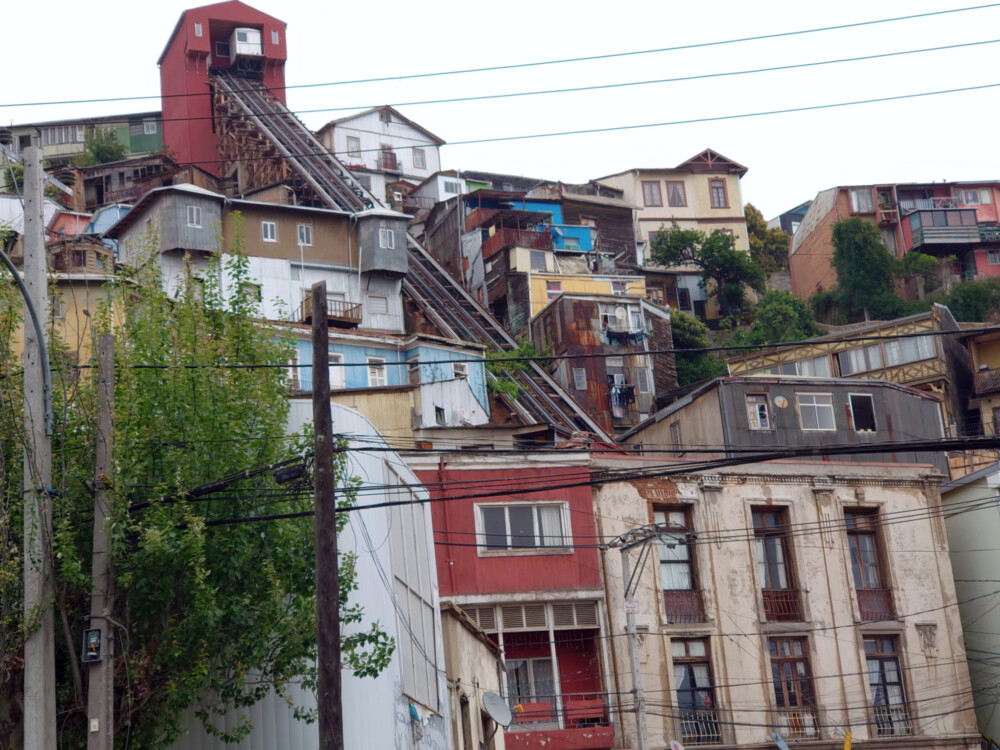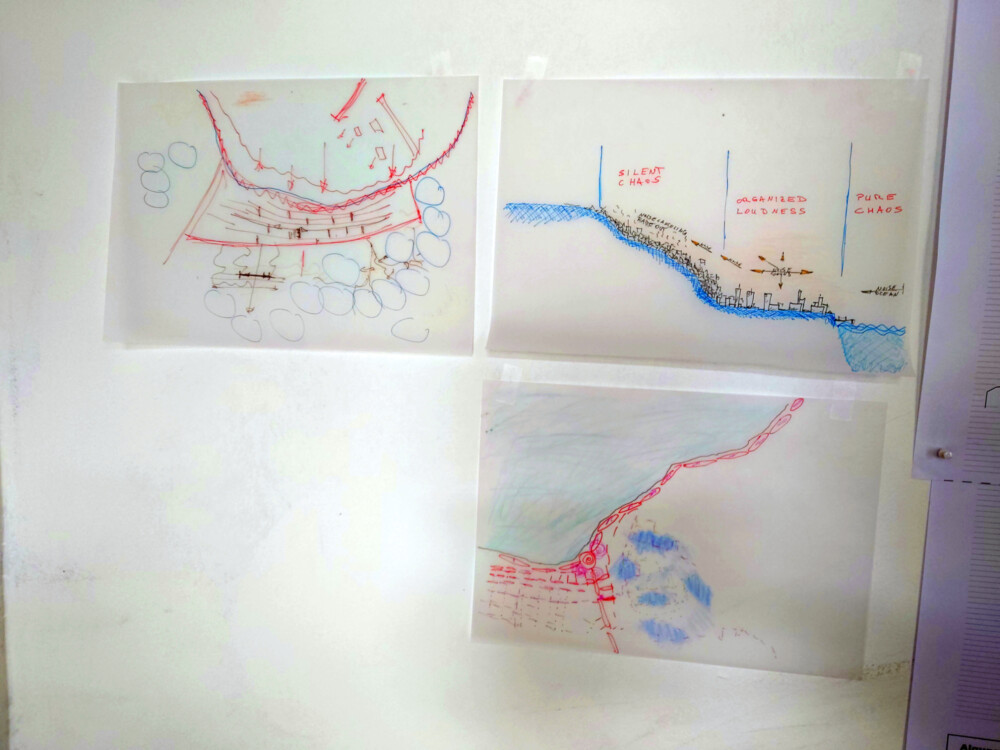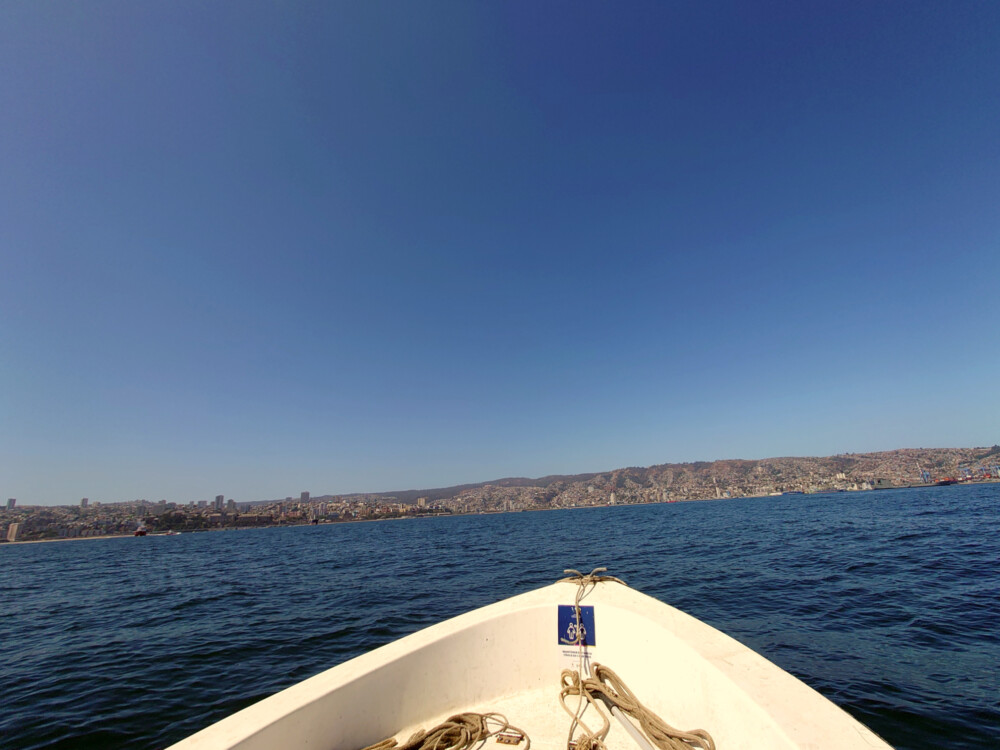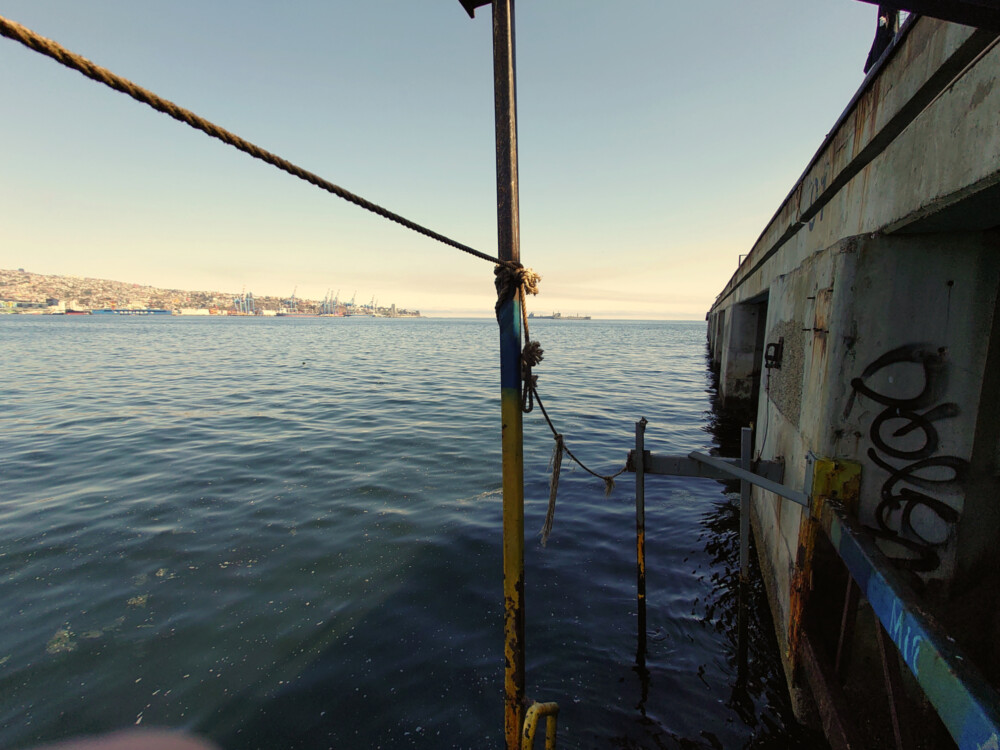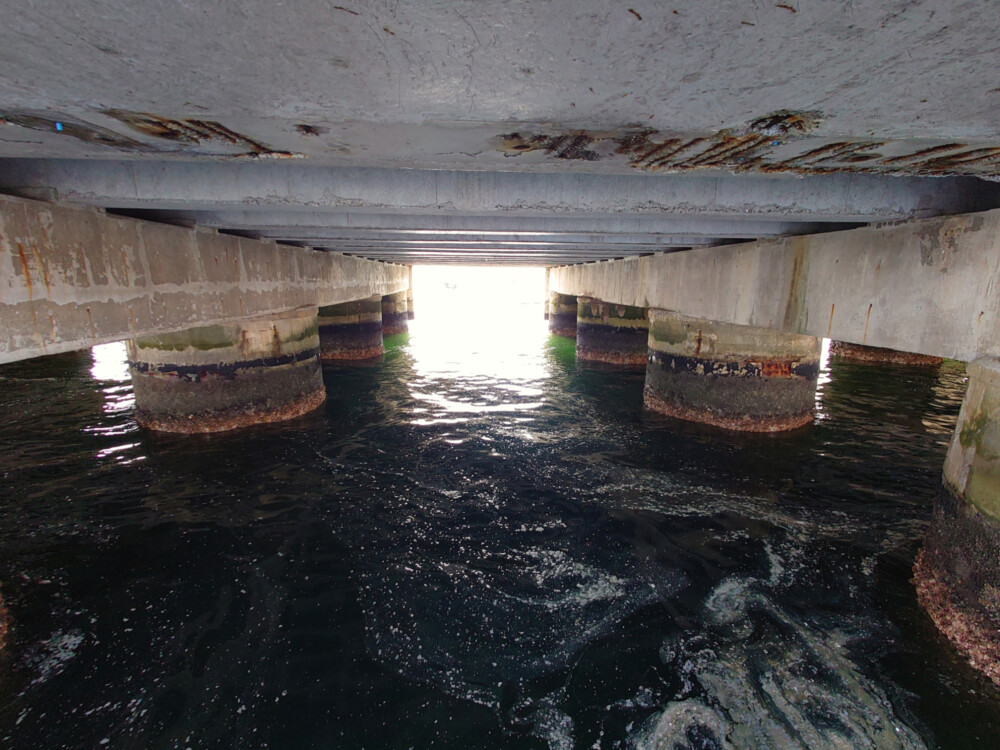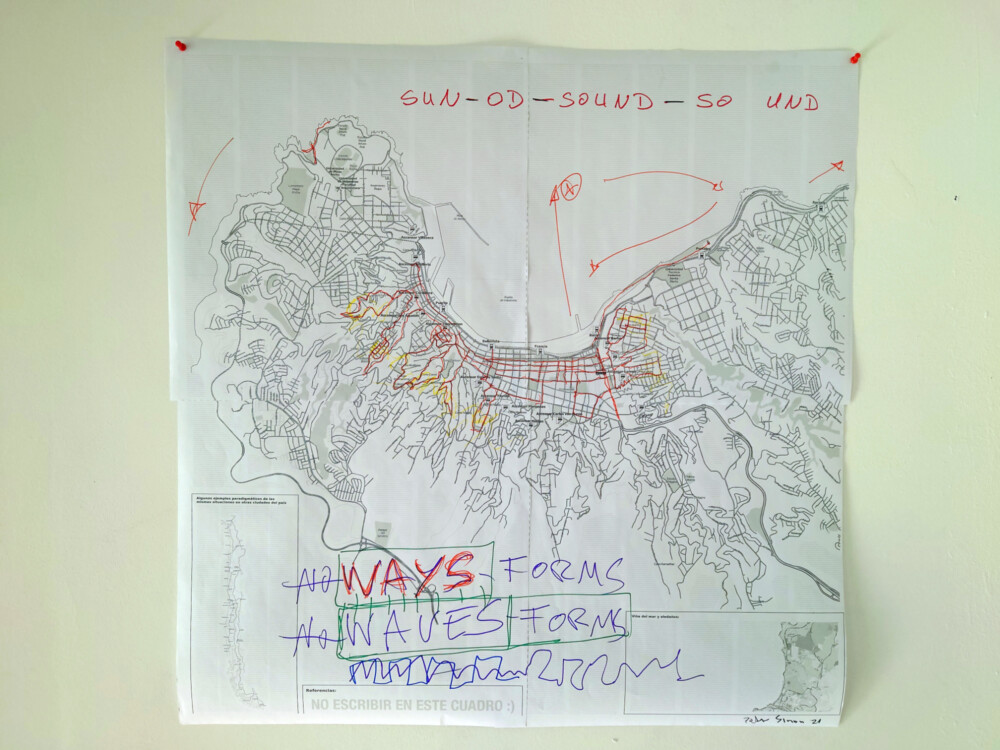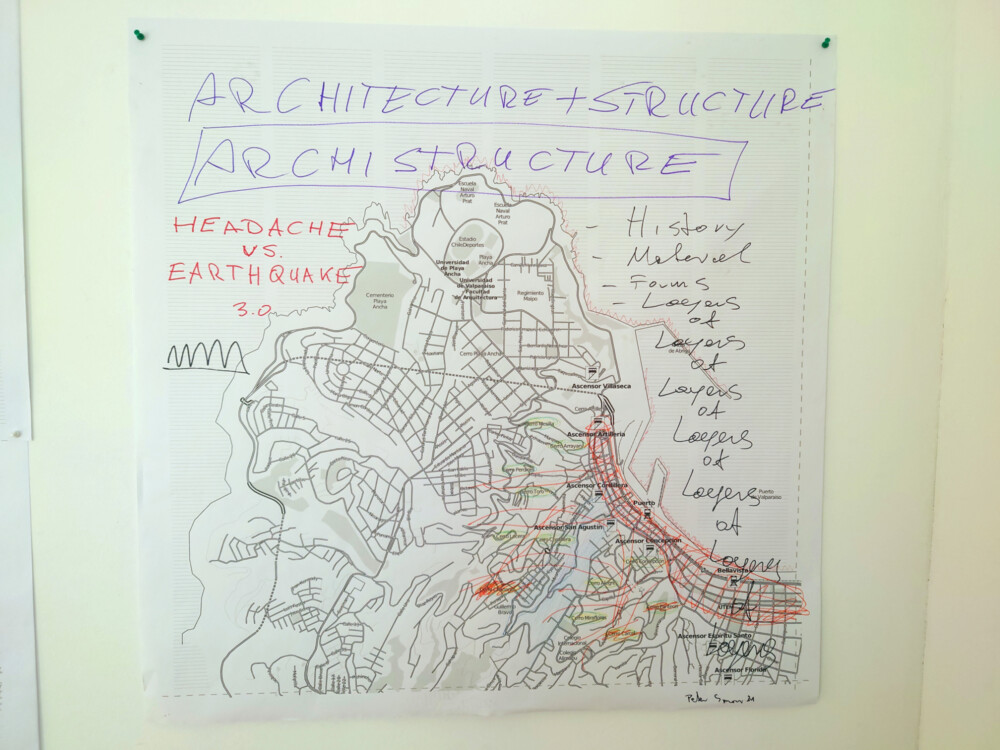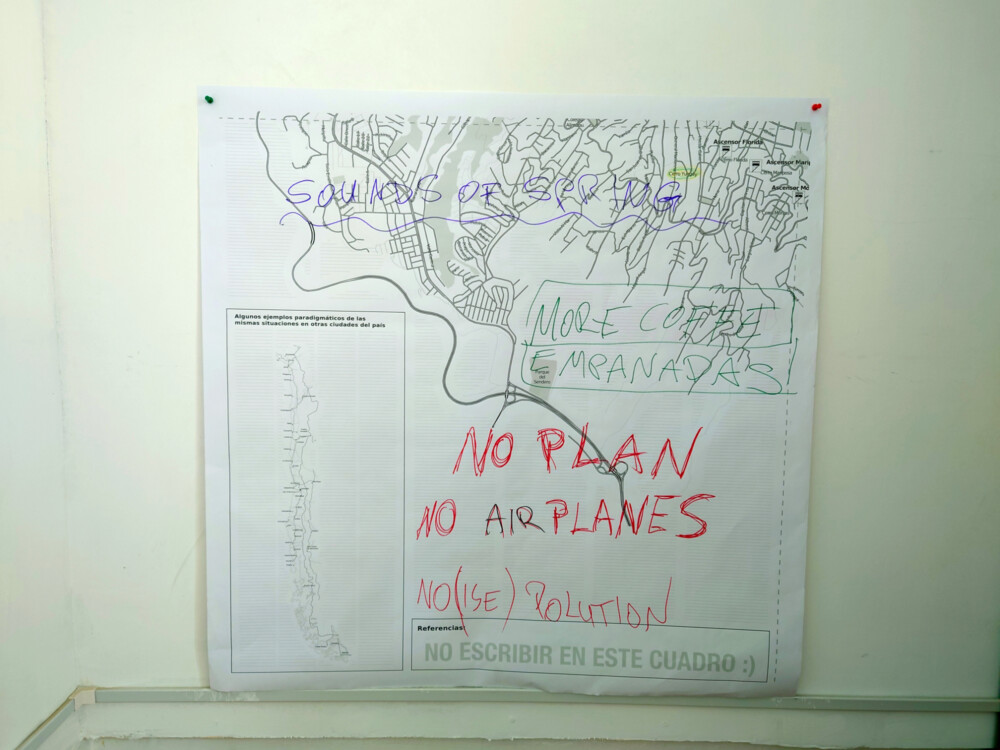TOPOSONICA
2021, Sound Art
B.A.S.E Tsonami, Valparaiso Chile
Laboratorio Abierto | Paisajes invisibles: Cerros, caos y olas.
Nov. 19, 6:30 p.m., B.A.S.E Tsonami, Valparaiso.
Paisajes invisibles: Cerros, caos y olas
Resonancias: Sound laboratory in Valparaíso, Chile
An open art laboratory by the artists Peter Simon (Germany), Isabel Florencia (Chile) and Amelie Gut (France) was created as part of the Resonancias programme, organized by the Goethe-Institut Chile and the French Institute Chile, supported by the Franco-German Cultural Fund and the Chilean Ministry of Culture, Arts and Heritage. The partner was B.A.S.E Tsonami.

Valparaíso, founded in the 16th century and an important port in Chile, is characterized by its steep hills, narrow streets and winding staircases. The historic port city with its colonial and 19th century buildings creates a special acoustic, in which the sounds of the sea, traffic and human activity overlap in a complex way.
As part of the residency, I investigated the acoustic levels of the city, with a focus on topography, architecture and urban dynamics. The aim was to make the rhythm of Valparaíso audible.
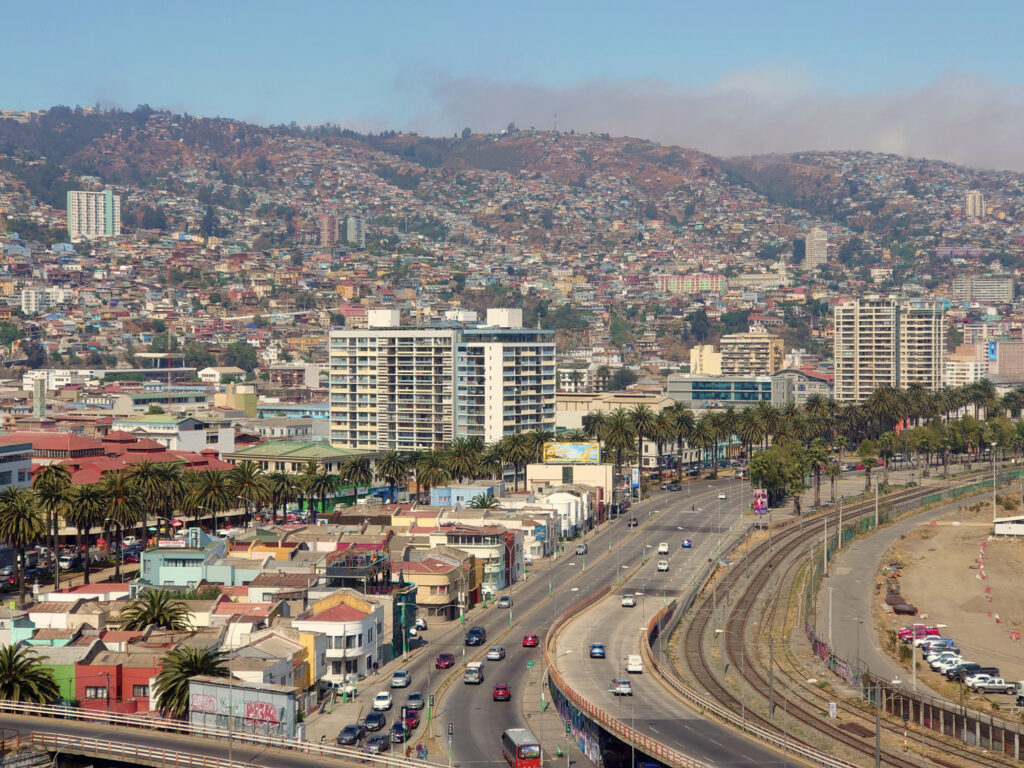
The first approach was to capture sound structures cartographically, but the erratic movement pattern of the harbor city made this practically impossible. Instead, a model of three acoustic levels was developed, which are determined by the topography, location and construction of the city:
Pure chaos – coastal zone: the sound of the Pacific dominates here. The surf, ships and harbor activities merge into an unpredictable tapestry of sound.
Organized noise – Downtown: In the valley zone of the city, between the port, streets and markets, human activity, traffic and urban noise overlap. The noise structure is dynamic but relatively predictable.
- Silent chaos – hills: The acoustic presence is reduced on the slopes and vantage points, the general silence is only sporadically interrupted by traffic, dogs, road noise or distant signals. Reflected, delayed sound waves are particularly prominent here, as the steep hills and densely built-up areas create natural echo and resonance chambers.
Based on this topographical-acoustic analysis, a three-dimensional sound installation was created with three loudspeakers arranged one above the other, which amplifies the characteristic sounds of each level:
the waves of the sea on the coast,
the traffic and urban noises in downtown,
the atmosphere of the hills, including sound reflections and silence.
In this way, a three-dimensional “photocopy” of Valparaíso’s acoustic present was created, which makes the historical topography, the city’s architecture and the dynamic sound spaces audible. The installation makes it clear that the city consists of several acoustic layers that overlap, reflect and are modulated by the topography – a sonic map that makes both history and architecture audible.
